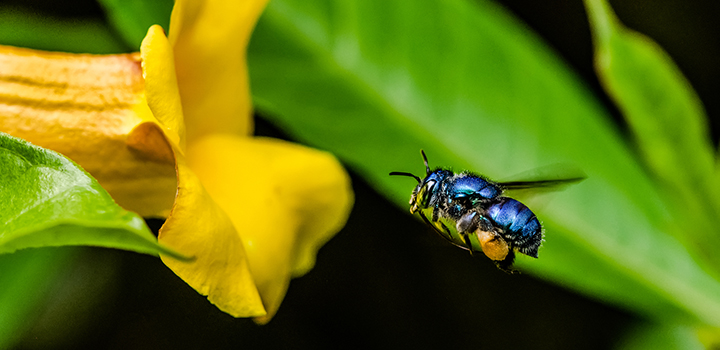Hydropower dams induce widespread species extinctions across Amazonian forest islands
By: News archive

Deforestation, habitat loss and fragmentation are linked and are driving the ongoing biodiversity crisis, with hydropower to blame for much of this degradation. In lowland tropical forests, river damming typically floods vast low-elevation areas, while previous ridgetops often become insular forest patches.
In a new study, scientists from UEA, Portugal and Brazil used network theory to understand how insular habitat fragmentation affects tropical forest biodiversity. This approach perceives habitat patches and species as connected units at the whole-landscape scale, encompassing a species-habitat network.
The study, ‘Emergent properties of species-habitat networks in an insular forest landscape’, is published today in the journal Science Advances.
The authors studied 22 habitat patches, consisting of forest islands and three continuous forest sites, which were created by the Balbina Hydroelectric Reservoir, one of the largest in South America. The 608 species surveyed represented eight biological groups: mid-sized to large mammals; small non-flying mammals; understorey birds; lizards; frogs; dung beetles; orchid bees and trees.
The study revealed widespread species extinction, especially of large-bodied species, but this varied across different groups of plants, vertebrates and invertebrates. Island size determined the persistence of species diversity, with just a few islands holding the most diversity.
Large tracts of tropical forests become rarer as they are subdivided and isolated into small habitat patches. The removal of larger forest sites will exert the greatest impact, likely inducing secondary extinctions of species that occur only at a single site or those that have larger spatial requirements.
Conversely, small forest patches proportionally harbour more species than one or a few larger patches of equal total area, so the loss of smaller sites is also expected to cause secondary extinctions.
Prof Carlos Peres, co-author of the study, is Professor of Environmental Studies at UEA. He said: “Tropical developing countries are still hellbent on creating vast hydropower reservoirs under the banner of ‘green’ energy.
“This is a double-jeopardy because we lose both the unique lowland biodiversity and the carbon stocks of the now inundated old-growth forests.
“Such actions also generate a powerful methane pump, never mind the huge financial costs of mega-dams compared to diffuse in-situ electrification based on low-impact renewables.
“We need a much better strategic dialogue between sustainable energy security and biodiversity conservation, particularly in the world’s most biodiverse emergent economies.”
Dr Ana Filipa Palmeirim, a researcher from CIBIO-University of Porto, led the study, which investigated a complex landscape as a single unit. She said: “This approach allowed us to unveil previously unknown patterns, such as the simplification of the network structure and changes in important network parameters due to the loss of species affected by the dam.”
Dr Carine Emer, a co-author of the study from the Rio de Janeiro Botanical Garden, said: “The beauty of this study lays in the combination of sophisticated network and statistical analyses, with the natural history of high-quality species inventories from an astonishing tropical living lab.
“More than 3,000 islands were created 35 years ago due to the Uatumã River damming, and by studying these we were able to understand the functioning of such a complex and rich human-modified landscape.”
The study was a collaboration between UEA in the UK; the Research Centre in Biodiversity and Genetic Resources (CIBIO) and the University of Porto, in Portugal; the Research Institute of the Rio de Janeiro Botanical Garden; the State University of Santa Cruz; the State University of Mato Grosso; and the Farroupilha Federal Institute of Education, Science and Technology, in Brazil. The study would not be possible without the logistical support provided by the staff of the Biological Reserve (REBIO) of Uatumã.
‘Emergent properties of species-habitat networks in an insular forest landscape’ is published in Scientific Advances on 26 August 2022.
Related Articles

Ultra low frequency gravitational waves detected in space
Researchers at the University of East Anglia are part of an international team that have found evidence for ultra-low-frequency gravitational waves in space.
Read more
Study of Earth's stratosphere reduces uncertainty in future climate change
New research led by the University of East Anglia (UEA) reduces uncertainty in future climate change linked to the stratosphere, with important implications for life on Earth.
Read more
Investigating the coolest climate gas youve never heard of
Researchers at the University of East Anglia have launched a new project to investigate how a climate-cooling gas is produced in agriculture.
Read more